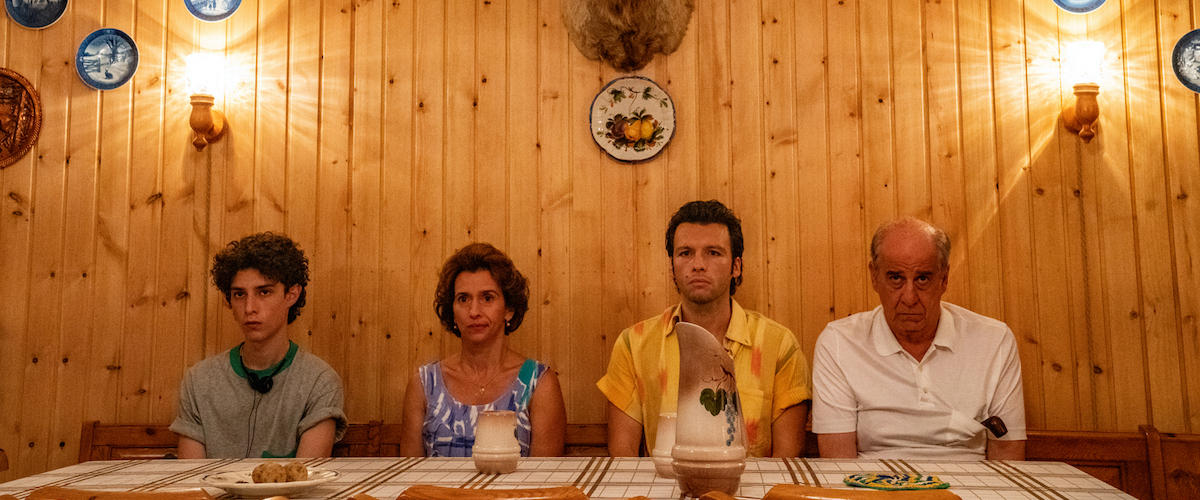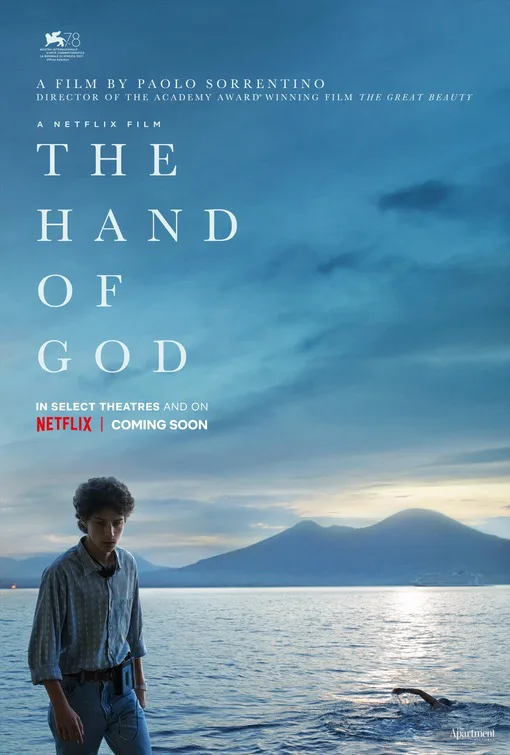With his rich coming-of-age drama “The Hand of God,” Italian filmmaker Paolo Sorrentino not only courts, but squashes comparisons to formative maestro Federico Fellini. Many viewers (and critics) will probably still compare “The Hand of God,” which Sorrentino wrote and directed, to Fellini’s “I Vitelloni” or “Amarcord,” and with some reason. In “The Hand of God,” Sorrentino (“The Great Beauty”) adapts events from his own life. His characters also often behave like the sort of charming, vulgar regional caricatures that Fellini sketched with vigorous broad strokes in his movies.
Set in Naples during the 1980s, Sorrentino’s movie follows introverted 17-year-old Fabietto Schiesi (Filippo Scotti) as he figures out his identity relative to his horny, embarrassing, and affectionate family members (imagine a cross between “Seduced and Abandoned” and “A Christmas Story”). “The Hand of God” might be Sorrentino’s least ambitious movie—its narrative is shapeless, and its characters and situations often seem familiar enough—but it’s also very accessible and over-stuffed with the sort of crass and romantic details that distinguish Sorrentino’s movies.
It’s easy to imagine that, with “The Hand of God,” Sorrentino challenged himself to make a personal, but unconventional autobiography. You might even reach this conclusion before Fabietto, in later scenes, has a characteristically unsentimental (but grandiose) heart-to-heart talk with filmmaker Antonio Capuano (a real-life mentor for Sorrentino).
“The Hand of God” also has a tip of the cap to the elusive Fellini in a few key scenes, like when older brother Marchino (Marlon Joubert) auditions for an unnamed Fellini film (as an extra). Sorrentino teases Marchino’s immodest ambition in a scene where Fabietto, his stand-in, waits with his brother in an office full of miserable-looking local performers. All of these would-be bit players are waiting to be recognized by the great filmmaker; Sorrentino hints at their character through their acne craters, their tan lines, and their restless body language in such an uncertain moment.
Most of “The Hand of God” concerns Fabietto’s tentative relationship with his parents Saverio and Maria (Toni Servillo and Teresa Saponangelo), the brightest stars in his messy family’s orbit. Sorrentino is also frequently attracted to the little family dramas that surround Fabietto’s relatives, all of whom are, despite their more ennobling moments, too stubborn or dim to be more than happy rubes.
Still, Sorrentino’s prickly, often defensive expressions of affection for his characters’ garish behavior is evident throughout comedic and/or dramatic scenes that are as vividly detailed and uncomfortably tender as Marchino and Fabietto’s pre-audition waiting room scene. That’s the lens through which Sorrentino presents Saverio and Maria. They clearly have affection for each other—and performatively whistle at each other, like love birds—even though they’re also going through a rough patch since, as we learn, Saverio’s having an affair (and it’s not a recent fling).
Without spoiling anything: Saverio and Maria’s impact on Fabietto’s life is substantial, though it’s not immediately obvious what they mean to him. Much of “The Hand of God” is set in the space between moments, when a pregnant pause can either give way to an overheated (and only partly sensible) insight or collapse into a sullen, faraway pout. So it’s easy to see why Sorrentino loves the women in “The Hand of God,” like depressed/hysterical aunt Patrizia (Luisa Ranieri) or aloof/dismissive neighbor Baroness Focale (Betty Pedrazzi). Their appeal is obvious to us, as viewers, because their open sexuality and maternal instincts make them objects for Fabietto’s curiosity. It’s still often thrilling to watch him gravitate towards them and try to understand what about them inspires him, beyond adolescent hormones. Sorrentino’s characters are defined by their solitude and their longing; they’re beautiful, but also tacky, and often unsympathetic, beyond little (as in blink and you’ll miss it) moments of unguarded intimacy.
There’s an immersive quality to the look and sound of “The Hand of God” that suggests the ideal way to see this movie is in a theater. The squeak of an enormous bed’s springs and the judder of a slammed door … these things have as much character as any of Fabietto’s family members, most of whom are lit with beatific chiaroscuro shading and framed with an impressive depth of field by cinematographer Daria D’Antonio.
I love the scenes in “The Hand of God” where nothing really happens, because as the Baroness explains, family members are often more complicated than they initially seem. The most drawn-out sequences in “The Hand of God” showcase Sorrentino’s knack for whimsical, but weirdly seductive drama. He still comes across like a movie brat who, despite his deep knowledge of world cinema, refuses to be bogged down with references to everybody else’s work. But “The Hand of God” feels like a Sorrentino movie because it’s about finding character in unexpected places and making it seem both true to life and completely overwhelming.
In limited theatrical release today and on Netflix on December 15th.




















